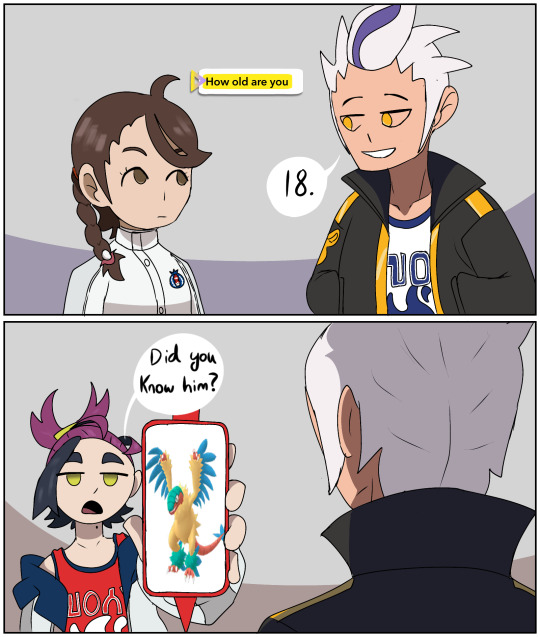#did you know
Explore tagged Tumblr posts
Text
What did these scientists find on the beach in Colombia?
The Constantine S. Niarchos Expedition featured here was generously supported by the Stavros Niarchos Foundation (SNF).
#science#amnh#natural history#nature#fact of the day#did you know#anemone#marine biology#women in stem#stem#colombia#ocean life#new research
368 notes
·
View notes
Text



Did You Know: The opening title screen to The Elder Scrolls IV: Oblivion begins with just the "IV" in "OBLIVION" being visible? This is a reference to Oblivion being the fourth mainline game in the series.
311 notes
·
View notes
Text
"are you okay" no can we change the topic before i start oversharing
38K notes
·
View notes
Text

the three sillies
#pokemon#pokemon scarlet and violet#pokemon sv#pokemon scarvi#pokemon dlc#the indigo disk#indigo disc dlc#bb league#pkmnart#pokemon art#pokemon juliana#pokemon kieran#pokemon drayton#did you know#doodle#meme
4K notes
·
View notes
Text

1K notes
·
View notes
Text

#iztea draws#art#genshin#beidou#ningguang#beiguang#fanart#genshin impact#genshin fanart#my art#illustration#DID YOU KNOW#beiodou has beaten ningg at chess twice#that's crazy i love their little chess thing#this is not really about chess anyways as you might have figured out#beidou fanart#ningguang fanart
1K notes
·
View notes
Text
Random Fact #6,634
Alligators can live up to 80 years old.

#random factoid#random fact#random facts#did you know#little known fact#random factoids#yes really#nature facts#animal facts#alligators#crocodilian#reptiles
394 notes
·
View notes
Text
Fake Biden: NOT one thing was legit. 🤔
#pay attention#educate yourselves#educate yourself#reeducate yourselves#knowledge is power#reeducate yourself#think about it#think for yourselves#think for yourself#do your homework#do some research#do your own research#do your research#ask yourself questions#question everything#truth be told#government corruption#government lies#government secrets#lies exposed#evil lives here#fake government#everything is a lie#treason#crimes against humanity#save the children#save humanity#news#what a joke#did you know
302 notes
·
View notes
Text

The Lilac-breasted Roller (Coracias caudatus) is always dressed for spring. This vibrant bird, which can be found throughout parts of southeastern Africa, is a monogamous species that mates for life. Both males and females come in an array of pink and blue hues. It’s known for its acrobatic antics, especially during mating season: This bird’s elaborate courtship rituals include swooping, diving, and rolling through the air. Lilac-breasted Rollers are so at home in the sky that they also breed in flight!
Photo: Justin Ponder, CC BY 4.0, iNaturalist
260 notes
·
View notes
Text


Did You Know: The scribs care about you? If you wait around in the wilderness, one may stop by to see how you are doing. This interrupts your waiting, but they will not be hostile.
1K notes
·
View notes
Text

#queer history#atheist history#alan turing#computers#computing#did you know#famous atheists#atheists#computer science
645 notes
·
View notes
Text

Knuckles' ability to sense signals given off by the Master Emerald and related objects could be somewhat similar to real world echidnas using electroreception to locate prey. This is likely a coincidence, but a fun one nonetheless!
192 notes
·
View notes
Text



Yeah the besties are forever also stuck in my head for the record
that "would you still love me if I was a worm" meme, but it sprout slowly turning into a cyborg with all his bits that are now metal
#did you know#it is ALWAYS morally correct to go bother diana about besties#asks#2 arms left#the besties#also anon “when 2al ends” ANON.....#2al DID end
158 notes
·
View notes
Text

Lewis Hamilton Last Race Comparison
#.found this one twitter thought it was fun#lewis hamilton#ad gp 2p24#abu dhabi gp 2024#mercedes#brazilian gp 2012#did you know#original#mclaren
306 notes
·
View notes
Note
Did you know seagulls can be lesbians.
https://qz.com/1023638/the-gulls-are-alright-how-a-lesbian-seagull-discovery-shook-up-1970s-conservatives
982 notes
·
View notes